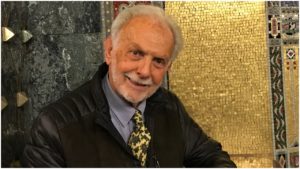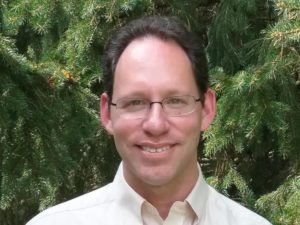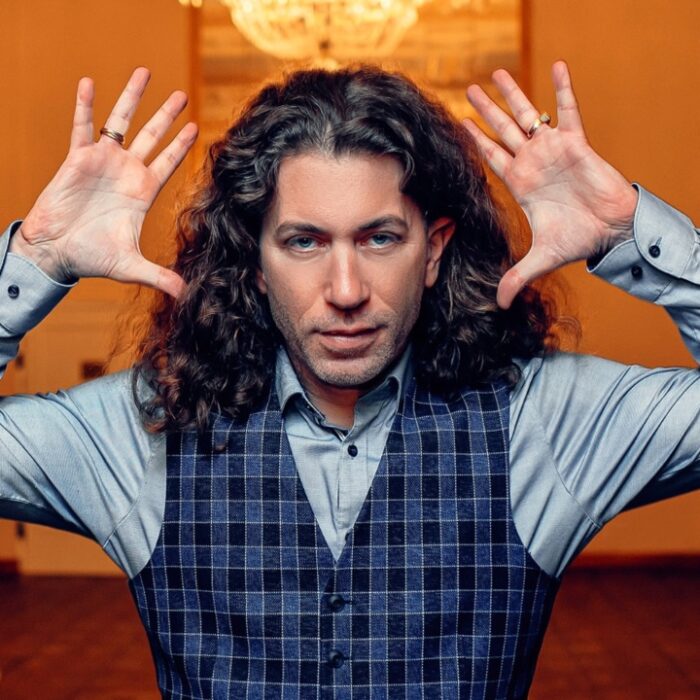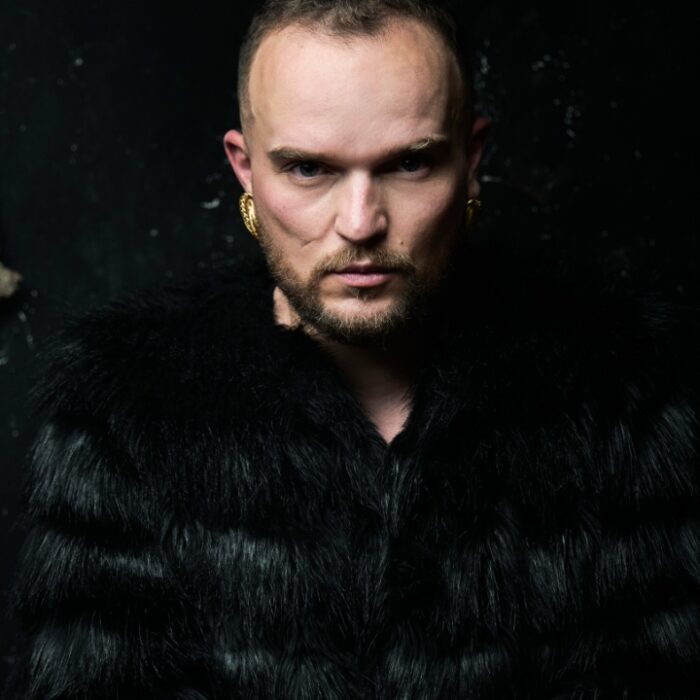
Q & A: TV Director Brian Large On Taping the Met’s Otto Schenk ‘Ring,’ 30 Years Later
By Greg WaxbergThirty years ago, in June 1990, opera lovers were glued to their television screens for four consecutive weekday evenings as they experienced what Richard Wagner always intended: a consecutive-evening presentation of “Der Ring des Nibelungen.”
Of course, his wish for four nights in a row was not realistic for the stage, given the demands it would place on musicians and opera companies, but it was realized on screen when PBS televised The Metropolitan Opera’s Otto Schenk/Günther Schneider-Siemssen production—at the time, only the second airing of the complete “Ring” on PBS. (In 1983, “Great Performances” televised the Pierre Boulez/Patrice Chéreau “Ring” from the Bayreuth Festival, but not on consecutive nights.)
As “Great Performances” Executive Producer David Horn told OperaWire, “Clearing the schedule for four consecutive nights was no easy task under any circumstances, but to our surprise, the programming staff at PBS saw the value in a stunt that only public television could pull off. It was a case of all of us sticking to our mission and doing something no commercial broadcaster or cable outlet would try.”
To celebrate the 30th anniversary of that historic telecast, OperaWire spoke with renowned British television director Dr. Brian Large (who had also directed the Bayreuth “Ring”) about his background and his memories of the Met taping, which required a crew of about 30 people in March–April 1989 and March–May 1990.
OperaWire: You have been directing classical music and opera on television for over 50 years. How did you arrive at that specialty?
Brian Large: I studied at the Royal Academy of Music in London, training to become a conductor and concert pianist, but in my mid-20s, I came to a crossroads. I realized that I wanted to use my musical knowledge and background to connect with audiences through media—television, films, and recordings. I decided to give up being a musical performer and went to the BBC, where I became a director for music programs.
OW: Tell us more about this crossroads. Why did you change your mind about performing?
BL: When I was in Prague in the early ’60s, I was so impressed with the quality of Czech TV music programming, with its extensive concert, recital, modern dance, ballet, and opera transmissions. In fact, the music/arts coverage was possibly far superior to what the BBC was doing in the late ’50s and early ’60s in England. The opening of a second BBC Channel in September 1964 seemed to beckon me. BBC2 was created for minority audiences, and music and arts featured largely in its early programming. I felt I would be able to touch more people by making music programs for the new channel than I ever would by performing in a concert hall. I decided to return to England and put my years of musical training to the service of the media and the new channel. I joined the BBC in January 1965.
OW: How did you train to become a director?
BL: The BBC gave me opportunities to observe and train. They liked my musical background and experiences and gave me freedom to look around all the studios in London, to see how studios worked, how directors directed, how departments worked, and to embrace all those influences.
OW: What is your general approach to directing?
BL: You don’t want to make a mistake. There is nothing more humbling or confidence-destroying than to see your mistakes on screen. Everything I’ve done in 51 years of directing has been based on the idea of “prepare, prepare, prepare, rehearse, rehearse, rehearse” . . . and then, rehearse some more. I practice like a concert pianist. I adopted that technique from music. You make certain of what you want to say and how to say it.
OW: How do you describe your style?
BL: Trying to be fair and honest to the performers, fair and honest to the public, fair and honest to myself. It is dictated by the music, by key change, by orchestration, by phrasing . . . my musical background really has been the Bible for me.
OW: Did you speak with Otto Schenk about capturing his vision, or are stage direction and television direction two separate entities?
BL: With any director, my job is to say, “Hello, I’m Brian. We are going to work together. How can I best bring your story to the small screen?” It comes down to one thing: telling a story. The director has a story to tell, and it’s my job to tell that story as best I can in technical means, to make the story clear—to make the underpinning of character, reaction, and motive clear.
OW: Did you temporarily alter any of the staging to better capture the action?
BL: Very little of the staging was altered. There might have been some detail that I particularly wanted to exploit, so I would talk to the representative of Schenk, who wasn’t always there for all of the rehearsals, and then we would talk to the artists. When they understand what one is looking for, and what they have to do to achieve that vision, they comply because they know it’s in their own interest. When I saw something that I couldn’t achieve in the camera the way I wanted, I occasionally asked the artists to adjust, but only minor adjustments like moving a few inches closer, or looking at a slightly different angle—nothing Otto would have objected to in any way, shape, or form. He trusted me.
OW: How did you prepare so that you would be able to capture characters’ reactions?
BL: I attended all rehearsals on C-level, beneath the Met stage, so that I could observe how the singers reacted to each other. Part of my job is not just to put the camera on someone who is singing. It is psychologically interesting to the viewer to show reaction—to underpin the action underpinning the drama underpinning the motifs, characters, and characterizations. It’s the only way I feel I can be fair to the artists, production, and composer. Reaction is part of the story.
OW: When recording two performances of the same opera, how do you make sure that you can edit for continuity in the visuals and music?
BL: With preparation and work on the musical score, I time everything down to the notes, and I time the phrases. I can say, “Between these 16 bars, I want to zoom.” You stopwatch your zoom time to those 16 bars. If you anchor everything to the music, it will work—generally speaking, conductors are so precise in their musical interpretation that it varies very little [from performance to performance].
OW: Prior to taping, how much rehearsal did you have with cameras?
BL: For each opera, I had two orchestral/lighting rehearsals and two live recordings. “Götterdämmerung” may have had an extra rehearsal for Act II because it has a chorus.
OW: For scene changes in “Das Rheingold” and “Götterdämmerung,” the production used scrims, showing projected lighting effects, but those scrims were not shown on television. Why were they omitted?
BL: A scrim softens the look of the stage. On television, it immediately soaks up the light and softens the image. Also, if you shoot through a scrim, with a zoom lens, you will see the surface material, which is totally disturbing. For a clear picture in focus, take out the scrim.
OW: With the scrims removed for television, how did you create the on-screen visual effects for those scene changes?
BL: It was done in post-production, taking certain images from the videotape and electronically turning them into an effect that would be sympathetic to and supportive of the mood required, dramatically and musically. It was all part of the general scenic impression. What we did 30 years ago could be done so much easier today—back then, we thought we were pretty clever.
OW: Were any of the production’s actual scenic or lighting effects modified in-house during the performances, for the cameras’ benefit?
BL: Maybe a little bit, but only in the dark scenes. We made certain the aperture on all the camera lenses was wide open.
OW: In Act three of “Die Walküre,” where did you place the camera for that memorable, magical shot that looks down on James Morris and Hildegard Behrens?
BL: Onstage, high up on a lighting tower. That is a shot I wanted to create. At that very moment, Wotan is speaking to Brünnhilde about looking into her eyes. I wanted to underline it. I wanted a steep shot, looking down, to have her face, to underline the German text. If you study the score and libretto, these are the things you want to bring to the audience. It’s what a director should do.
OW: How did Lighting Designer Gil Wechsler oversee the lighting for taping?
BL: He was in the lighting booth and made certain the lighting levels matched what we had discussed and required. If there was any variation, he had his lighting operators adjust as needed.
OW: It sounds like the entire effort became, in equal parts, a stage production and a television production, with everyone who was involved in the staging highly aware of how cameras were capturing it. Was that the case?
BL: Yes, it was an enormous undertaking, something the house was proud to do, something the orchestra, chorus, and production department wanted to be able to deliver in the best possible way.
OW: How did you feel when you were finished taping?
BL: Excited, and how proud I was to have done it. How privileged I felt to have been asked to do the “Ring,” especially at the Met. I was proud of everyone and, particularly, my camera crew and assistants. It was a major event, and I’m proud of what we achieved. I think it proved to the Met that they should not be afraid to ever attempt to bring Wagner to the screen. Since then, we did “Parsifal,” “Tristan,” “Meistersinger” . . . it opened the floodgates to television productions of Wagner at the Met. I’m also happy that we were able to put on screen a romantic, traditional-looking “Ring” cycle that reflected what a lot of the public wanted.
OW: How do you feel today, 30 years later?
BL: I feel especially honored to have created what I consider to be a piece of “television history” that documents the musical quality and standards of Met productions in the last years of the 20th century.



